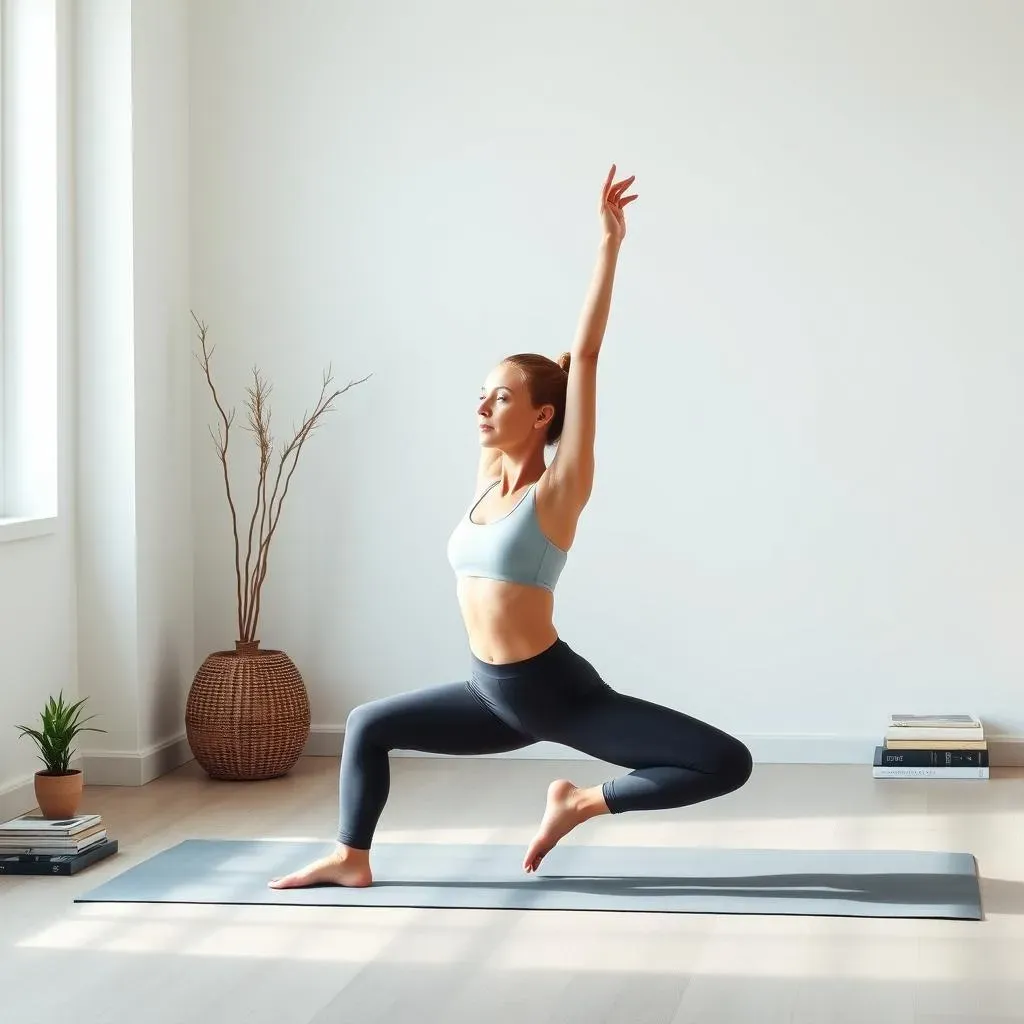Table of Contents
Ready to sculpt a stronger, more flexible you without stepping foot in a gym? This guide is your passport to the amazing world of "pilates workout at home without equipment." Forget expensive equipment and crowded studios; we'll unlock the power of your own body weight to achieve a full-body Pilates workout, right in the comfort of your living room. We'll start by exploring the core principles of Pilates, ensuring you understand the fundamental movements and breathing techniques that will maximize your results. Then, we'll dive into a range of exercises, perfect for all fitness levels – from beginner-friendly flows to more challenging sequences for seasoned Pilates enthusiasts. Whether you're aiming for a toned core, improved posture, increased flexibility, or simply a fantastic full-body workout, this guide will provide everything you need to create your own personalized Pilates routine. Get ready to discover the transformative power of Pilates – no equipment required!
Mastering the Fundamentals: Essential Pilates Principles
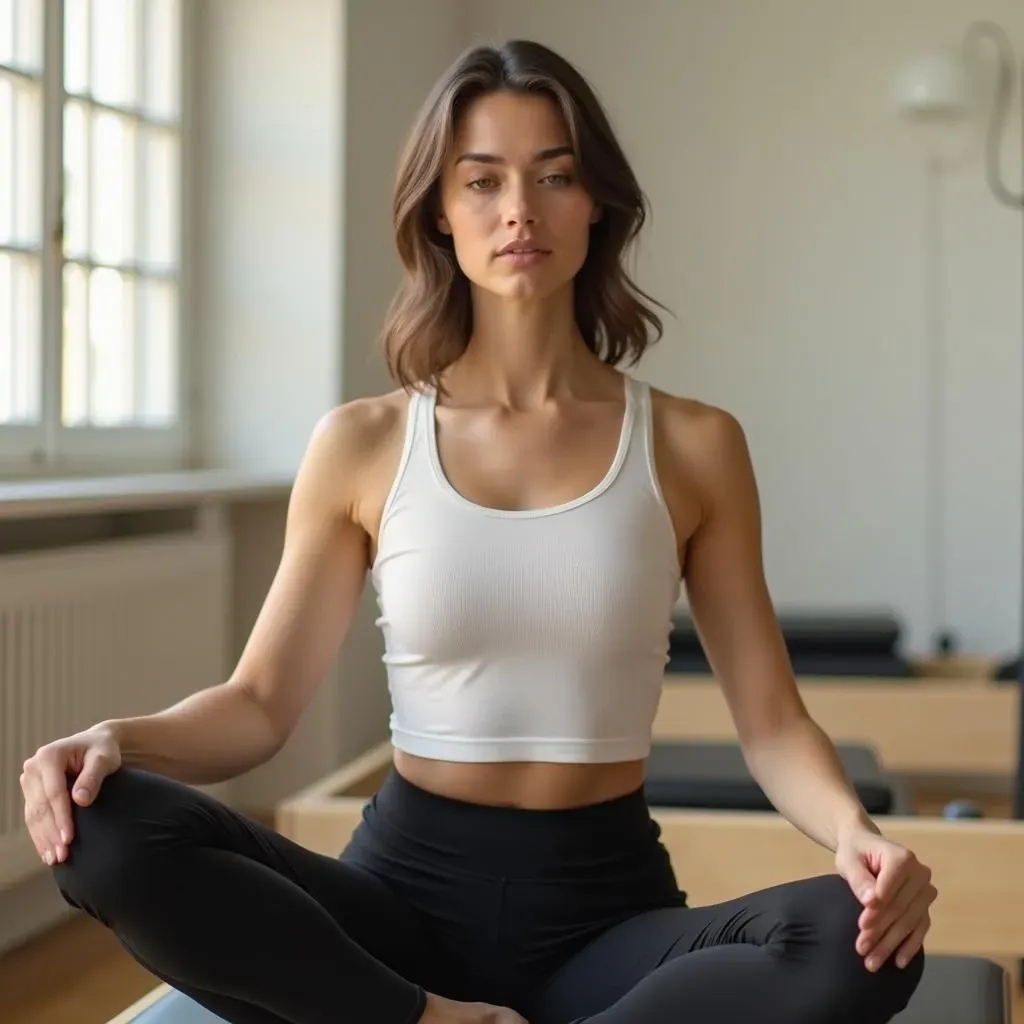
Mastering the Fundamentals: Essential Pilates Principles
Breathing: Your Pilates Powerhouse
Before you even think about lifting a leg, let's talk breathing. It's the secret weapon in Pilates, connecting your mind and body. Think of it as the engine of your workout. You'll be using deep, controlled breaths to engage your core and power your movements. Inhale deeply, expanding your ribcage and filling your lungs. Exhale slowly, drawing your belly button towards your spine. This controlled breathing isn't just about getting air in and out; it's about creating stability and power. This is crucial for every exercise, from the simplest to the most challenging. Mastering this breathwork transforms your Pilates practice.
Imagine a balloon slowly inflating and deflating – that's the kind of smooth, controlled breathing you're aiming for. Don't rush it! Take your time and feel the movement of your breath. It's like a gentle massage for your insides, and it helps you engage your core muscles effectively. If you find it challenging, try practicing your breathing separately before you start a workout. For a more in-depth look at Pilates for beginners, check out our guide on beginner Pilates at home.
Breathing Phase | Action | Muscle Engagement |
|---|---|---|
Inhale | Expand ribcage, fill lungs | Diaphragm |
Exhale | Draw belly button towards spine | Transverse abdominis |
Core Engagement: Your Body's Center of Gravity
Your core isn't just your abs; it's a complex network of muscles that includes your back, hips, and pelvic floor. Engaging your core properly is like building a strong foundation for your house – it makes everything else work better. Think of it as your body's center of gravity, keeping you stable and balanced during every movement. It's not about sucking your stomach in and holding your breath; it's about a deep, controlled engagement that supports your spine and improves posture.
Imagine a corset gently tightening around your waist – that's the feeling you should aim for. This deep core engagement protects your back, improves balance, and makes your movements more precise and powerful. It's the key to unlocking the full benefits of Pilates. If you're struggling with core engagement, try lying on your back with your knees bent and focus on drawing your belly button towards your spine. For a more advanced challenge and to see how Pilates can help with weight loss, visit our post on Pilates for weight loss.
- Engage your deep abdominal muscles
- Maintain a neutral spine
- Support your back and improve posture
Precision and Control: Quality Over Quantity
Pilates isn't about how many reps you can do; it's about the quality of each movement. Focus on slow, controlled movements, paying attention to every detail. This focus on precision helps you build strength and flexibility more effectively. It’s about feeling the muscles working and making sure your form is perfect. Think of it as sculpting your body, one perfect movement at a time.
Don't rush through the exercises. Take your time and really focus on the engagement of your muscles. Feel the burn, but don't push yourself too hard. Remember to listen to your body and stop if you feel any pain. If you're looking for a variety of effective Pilates exercises, check out our comprehensive guide to the best Pilates workouts at home.
Bodyweight Pilates: A FullBody Workout
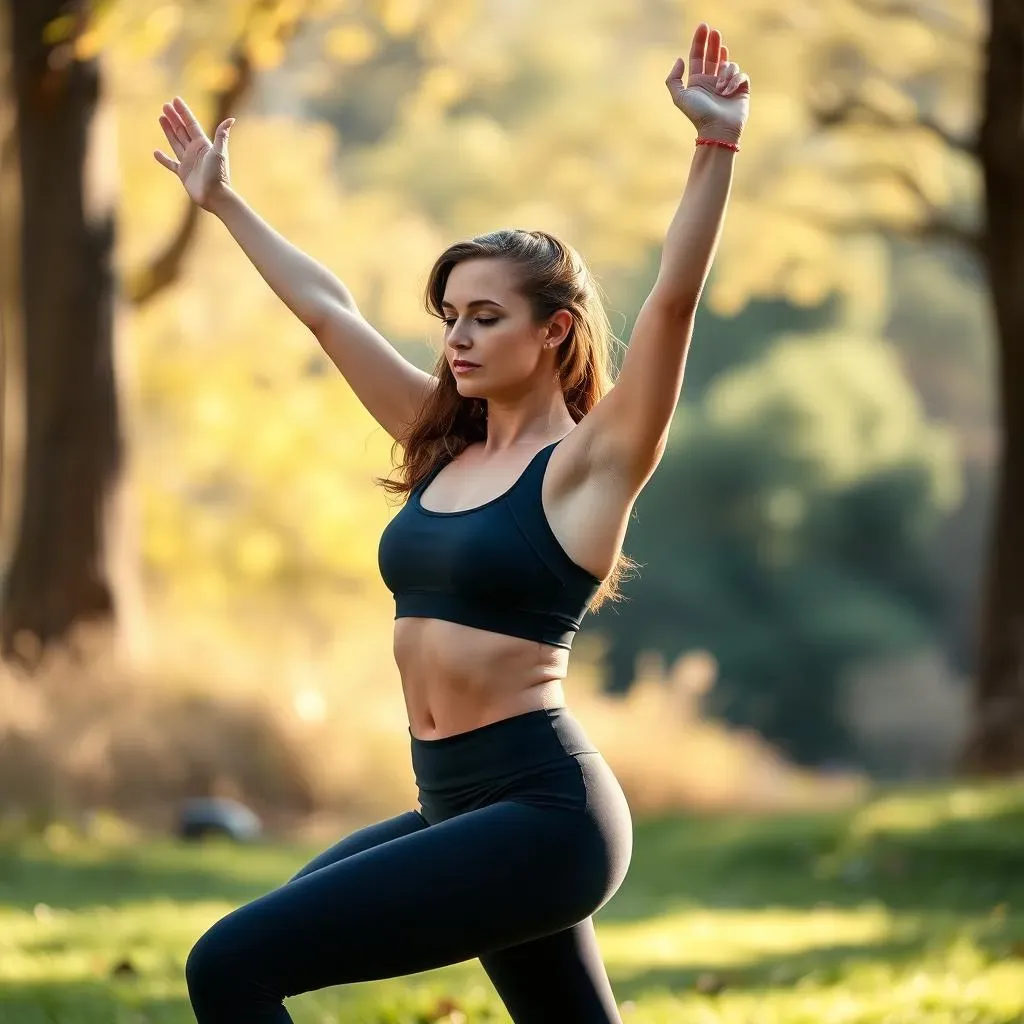
Bodyweight Pilates: A FullBody Workout
Core Powerhouses: Strengthening Your Center
Now that we've nailed the fundamentals, let's get moving! We'll start by targeting your core, the powerhouse of your body. Think of your core as the engine that drives all your movements. Strong core muscles not only give you a flatter stomach, they improve balance, stability, and posture. We'll use bodyweight exercises to build this strength – no fancy equipment needed. Here, we'll focus on exercises that build your core strength. Imagine your belly button pulling in towards your spine while performing these exercises. This will activate your deep core muscles and provide a stable base for all other movements. We'll focus on exercises that really challenge your core strength, and that's where the real magic happens.
Some classic moves include the hundred (a great warm-up), rolling like a ball (for deep core work), and the single leg stretch (to really fire up those obliques). Remember, slow and controlled movements are key. Quality over quantity, my friend! Think about how each movement feels in your core, and you'll start to feel the difference. For more detailed instructions and variations, you might want to check out our guide on best Pilates workouts at home. This will offer you a variety of exercises to target different parts of your core.
Exercise | Focus | Benefits |
|---|---|---|
The Hundred | Core endurance | Strengthens deep abdominals |
Rolling Like a Ball | Core stability | Improves spinal flexibility |
Single Leg Stretch | Oblique engagement | Strengthens side abdominal muscles |
Full Body Flow: Engaging Every Muscle Group
Once your core is fired up, it's time to move to other parts of your body. Pilates isn't just about abs; it's a full-body workout that builds strength, flexibility, and balance. We'll explore moves that gracefully integrate your legs, arms, back, and glutes into the routine. Imagine your body as a beautifully coordinated machine; every part works together in harmony, creating both strength and flexibility. These exercises will help you build strength and flexibility in your legs, arms, and back. Think of it as a full body ballet, where every movement flows smoothly into the next.
Think of exercises like the bridge (for glutes and hamstrings), swimming (for full-body engagement and back strength), and arm circles (for shoulder strength and mobility). These are just a few examples; there are countless variations you can explore. Remember, proper form is paramount. If you're a beginner, it’s essential to master the basics before progressing to more challenging moves. For a gentler introduction to Pilates, check out our guide for beginners starting at home. It will guide you through the initial stages of your Pilates journey.
- Bridge: Strengthens glutes and hamstrings
- Swimming: Works core, back, and arms
- Arm circles: Improves shoulder mobility and strength
Pilates for Beginners: A Gentle Start
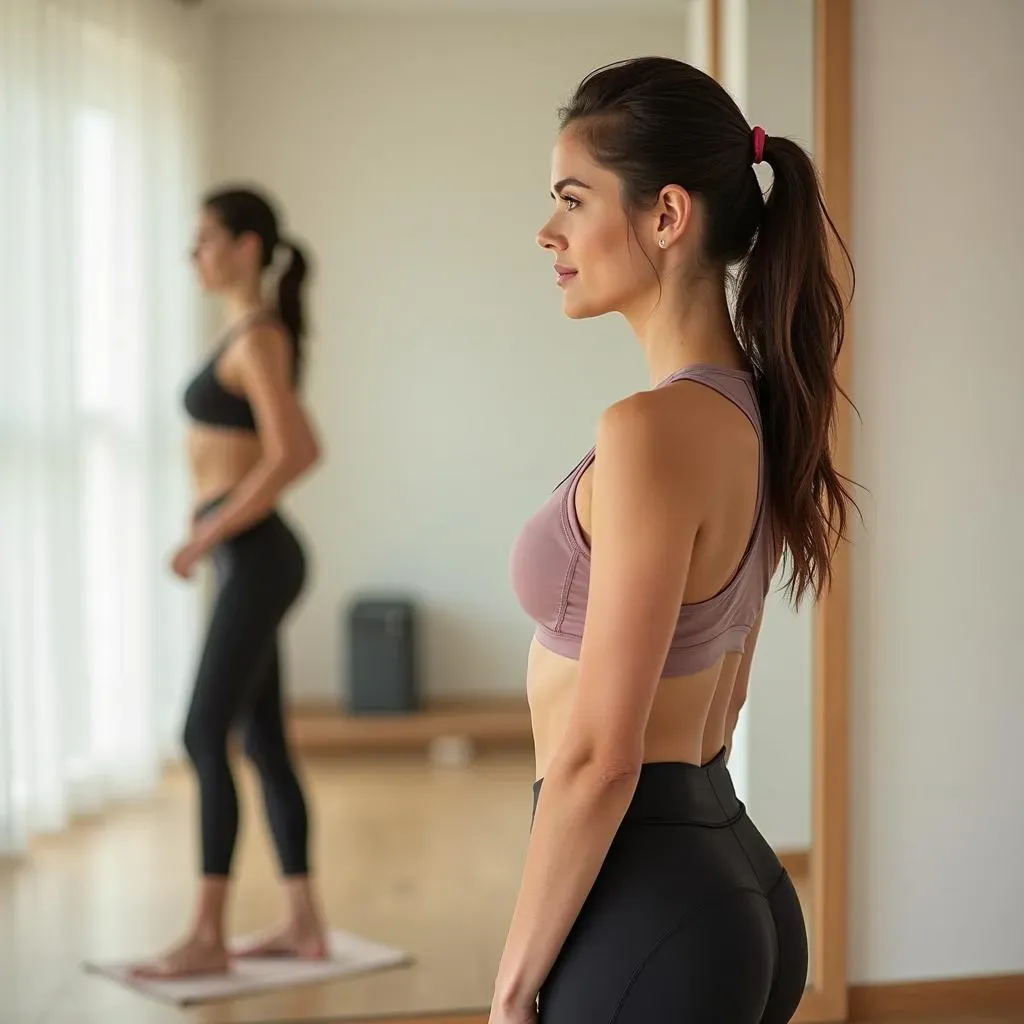
Pilates for Beginners: A Gentle Start
Starting Slow and Steady: Your Gentle Pilates Journey
So, you're ready to try Pilates, but you're feeling a little unsure? That's perfectly normal! Starting with beginner-friendly moves is key. We'll focus on building a strong foundation, focusing on proper form and breathwork before progressing to more challenging exercises. Remember, Pilates is a journey, not a race. It's about listening to your body and progressing at your own pace. Think of it like learning to ride a bike – you wouldn't try to do a wheelie before you've mastered balancing!
We'll begin with simple stretches and core exercises, gradually increasing the intensity as your strength and flexibility improve. Focus on maintaining a neutral spine and engaging your core throughout each movement. This will help protect your back and improve your posture. Don't worry about getting everything perfect right away – consistency is more important than perfection. If you're keen to explore more beginner-friendly Pilates exercises, you can check out our beginner's guide to home Pilates.
- Start with shorter sessions (10-15 minutes)
- Focus on proper form over speed
- Listen to your body and rest when needed
Modifications for Beginners: Making it Work for You
One of the beautiful things about Pilates is its adaptability. Many exercises can be modified to suit different fitness levels. For beginners, modifications are your best friends! They allow you to participate fully in the workout while protecting your body and building confidence. We'll explore simple ways to adjust exercises to make them easier or more challenging, depending on your needs. This ensures that you can participate comfortably and safely, building strength and confidence along the way.
For example, if a full-body exercise feels too challenging, you can modify it by performing just the upper or lower body portion. Or, if you're finding a certain movement difficult, you can reduce the range of motion or take more breaks between repetitions. Remember, it's about progress, not perfection! These modifications are key to making Pilates accessible and enjoyable for everyone. If you're looking for a more comprehensive workout plan, you might want to check out our guide on the best at-home Pilates workouts.
Exercise | Beginner Modification | Advanced Modification |
|---|---|---|
Roll Up | Roll up halfway | Full roll up with leg extensions |
Hundred | Perform with bent knees | Perform with straight legs |
Swan Dive | Perform on hands and knees | Perform on your stomach |
Advanced Pilates Moves: Challenge Yourself
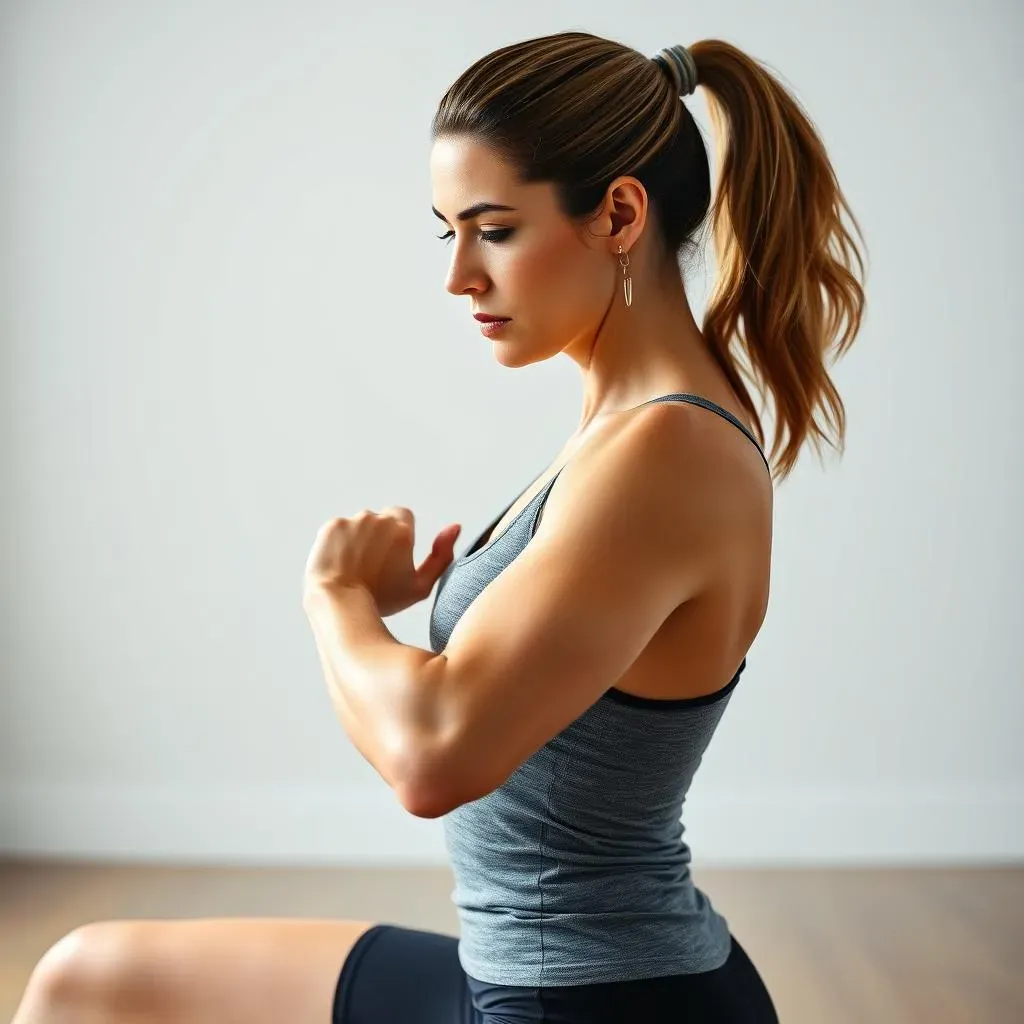
Advanced Pilates Moves: Challenge Yourself
Advanced Core Work: Taking it Up a Notch
Okay, you've mastered the basics. Your core is strong, your breathing is controlled, and you're ready for a real challenge. Now we're going to explore some more advanced core exercises that will really test your strength and stability. Think of these as the next level in your Pilates journey – the exercises that will sculpt your core into a truly powerful powerhouse. We'll be focusing on exercises that require greater balance, coordination, and precision, pushing your limits and building strength in new ways. Imagine your core as a finely tuned engine, ready to operate at peak performance. These advanced moves are designed to push your limits and make you feel both powerful and energized.
Exercises like the teaser (a full-body challenge that requires serious core strength), the saw (a twisting movement that works your obliques), and the spine stretch forward (a deep stretch that improves spinal flexibility) will become your new best friends. Remember, maintaining that controlled breathing and deep core engagement is even more important now. If you're looking for a comprehensive Pilates workout that takes you to the next level, check out our guide on the best at-home Pilates workouts. It's packed with advanced exercises to push your limits.
Exercise | Focus | Challenge Level |
|---|---|---|
Teaser | Full-body core strength | Advanced |
Saw | Oblique strength and flexibility | Intermediate/Advanced |
Spine Stretch Forward | Spinal flexibility and core strength | Intermediate |
Dynamic Pilates: Movement and Flow
Now let's move beyond static holds and delve into dynamic Pilates exercises. These flows incorporate continuous movement, requiring not only strength but also coordination and balance. Think of it as a graceful dance between strength and flexibility. These movements will challenge your body in new and exciting ways, improving both your strength and coordination. This section is all about flowing from one movement to the next, creating a dynamic and challenging workout that will leave you feeling invigorated.
Exercises like the flowing sequence (a series of connected movements), the mermaid (a side-bending exercise that improves spinal flexibility), and the corkscrew (a twisting movement that engages your entire core) will help you develop your body awareness and refine your control. Remember to focus on the quality of each movement, maintaining precision and control throughout the flow. If you're looking to lose weight and tone up, our guide on Pilates for weight loss offers a variety of dynamic exercises to help you reach your goals.
- Focus on smooth transitions between movements
- Maintain controlled breathing throughout the flow
- Engage your core to stabilize your body
Pushing Your Limits: Progressive Overload
The key to continuous improvement in Pilates (and any fitness journey, really) is progressive overload. This means gradually increasing the challenge of your workouts over time. You can do this by increasing the number of repetitions, holding poses for longer, or adding variations to the exercises. Think of it as a constant push, a gradual increase in the demands you place on your body, leading to consistent progress and results. This is the secret sauce to continuously improving your strength, flexibility, and overall fitness. It's about continually challenging yourself, pushing your boundaries, and celebrating your progress along the way.
Don't be afraid to experiment with different modifications and variations to find what works best for you. Listen to your body, and don't push yourself too hard, especially when starting. Remember, consistency and gradual progression are key to achieving your fitness goals. For a structured approach to progressive overload in your Pilates practice, consider checking out our guide to the best at-home Pilates workouts, which includes various progression options for different exercises.
